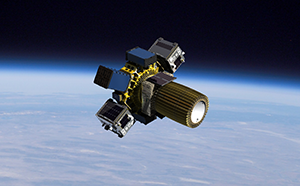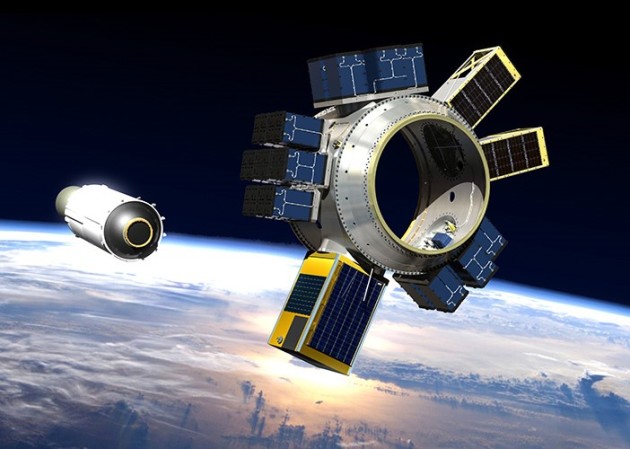Federal agencies can now buy a satellite launch as easily as they buy pencils, thanks to a new arrangement with Seattle-based Spaceflight.
OK, maybe it’s not quite that easy. You still have to get the go-ahead to put something into orbit, whether you’re a climate scientist at NASA or Agent Fox Mulder at the FBI. But once that go-ahead is given, the launch can be ordered from a standardized menu instead of going through a months-long contracting process.
“What this does is make it a more expeditious process,” Spaceflight’s president, Curt Blake, told GeekWire.
If you run NASA, you don’t have to go compete out a contract to determine which pencil vendor is the best.
Spaceflight is the first launch service provider to be awarded what’s known as a General Services Administration Professional Services Schedule. That means any federal official who’s authorized to spend the money can order a CubeSat or a MicroSat launch online, via the GSA Advantage’s eBuy site.

The online ordering site gets around many of the hurdles that stand in the way of arranging a launch – making the process more similar to the pencil procurement routine. “If you run NASA, you don’t have to go compete out a contract to determine which pencil vendor is the best,” Blake said.
Spaceflight guarantees that it will find a spot on a launch vehicle for a fixed price, much in the same way as pencils are sold.
Satellite launches are pricier than pencils, of course. The cheapest item on Spaceflight’s online menu goes for $278,503.78. That gets you the launch of a satellite about the size of a loaf of bread, weighing no more than 11 pounds (5 kilograms).
The most expensive item on the list is the launch of a 660-pound (300-kilogram) satellite for $7,667,074.85.
In each case, it’s bring-your-own-satellite. Spaceflight will find you the launch – perhaps on a SpaceX Falcon rocket, or on an Indian PSLV rocket, or on other launch vehicles provided by Spaceflight’s partners. The catalog lays out the price schedule for added services if you need them.
Spaceflight specializes in putting satellites into sun-synchronous polar orbits for Earth imaging. “That fits this model perfectly,” Blake said. The company has also partnered with NanoRacks to get small satellites deployed from the International Space Station.
You don’t have to be a federal agency to be a customer. For example, Redmond, Wash.-based Planetary Resources went with Spaceflight to make the arrangements for last year’s deployment of its A3R test satellite – as well as this year’s scheduled flight of an Earth-observing Arkyd 6 spacecraft.
But if you’re a price-conscious shopper with a GSA account, just keep this in mind: Spaceflight is offering up to a 20 percent discount for bulk purchases. Can you get that kind of a deal from a pencil pusher?
